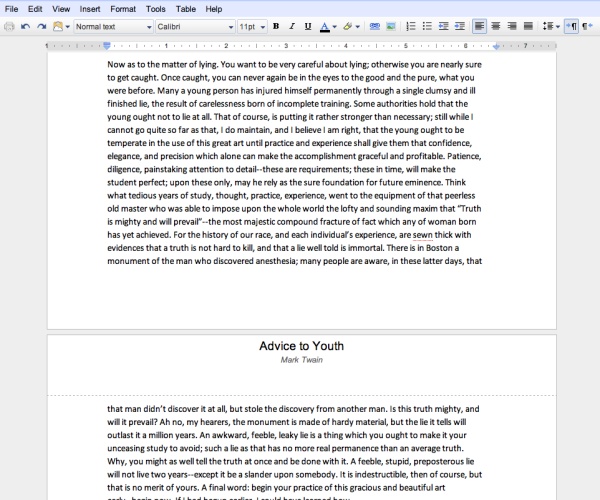Google Docs has gained a classic word processing feature: pagination. This feature is not the ability to have multiple pages in a document, but rather it's the ability to see actual pages on your screen.
Pagination adds visual page breaks while you're editing your documents. This allows Google to improve other features: headers now show up at the top of each page instead of just at the top of your document, manual page breaks actually move text onto a new page, and footnotes appear at the bottom of the pages themselves. Below you can see what pagination looks like, but if you don't like this view, you can hide page breaks by clicking on the View menu, choosing Document view, and selecting Compact rather than Paginated.

Pagination also allows Google to improve printing in modern browsers. The Google Docs team worked with the Google Chrome team to implement a recent web standard to support native printing. Before, if you wanted to print your document, it first had to be converted into a PDF, and then you needed to open and print it yourself. With native printing, you can print directly from your browser and the printed document will always look like what you see on your screen.
Unfortunately, native printing is only available in Google Chrome, but Google is hoping other browser vendors will implement the same web standard so that the same printing experience will be available from Google Docs from more than just Chrome.